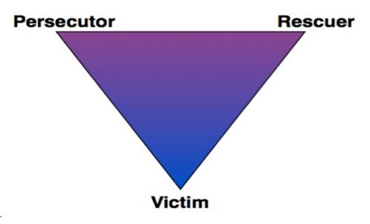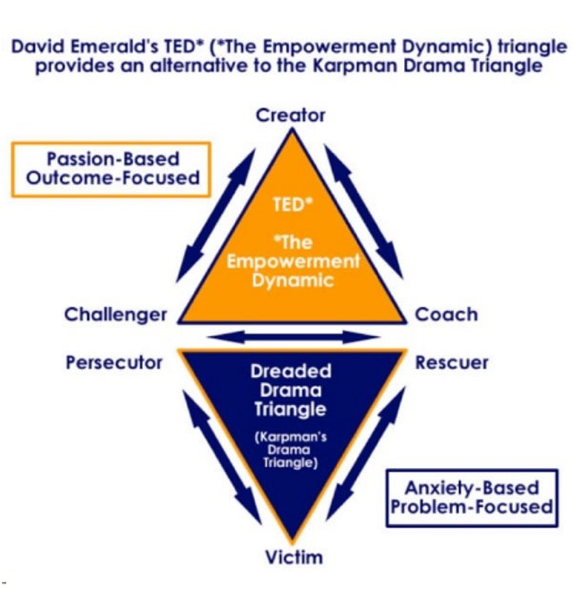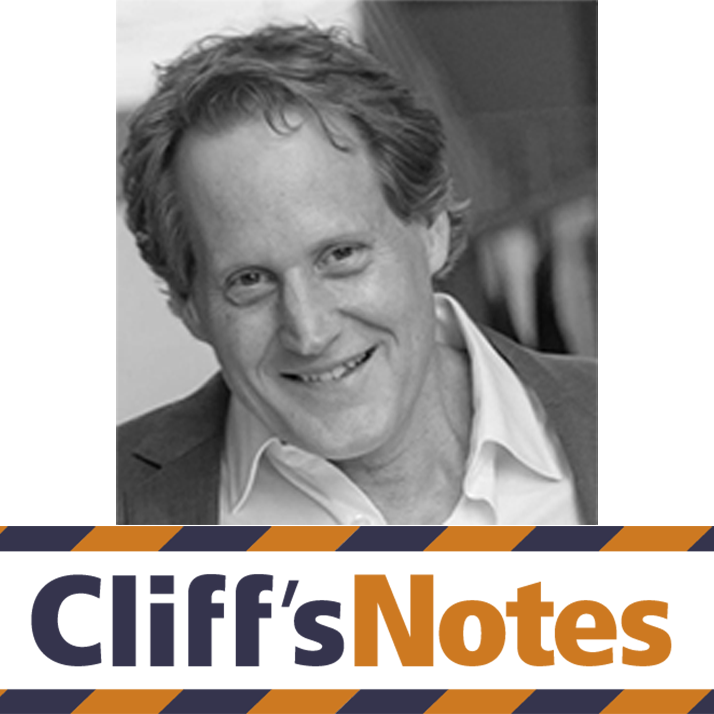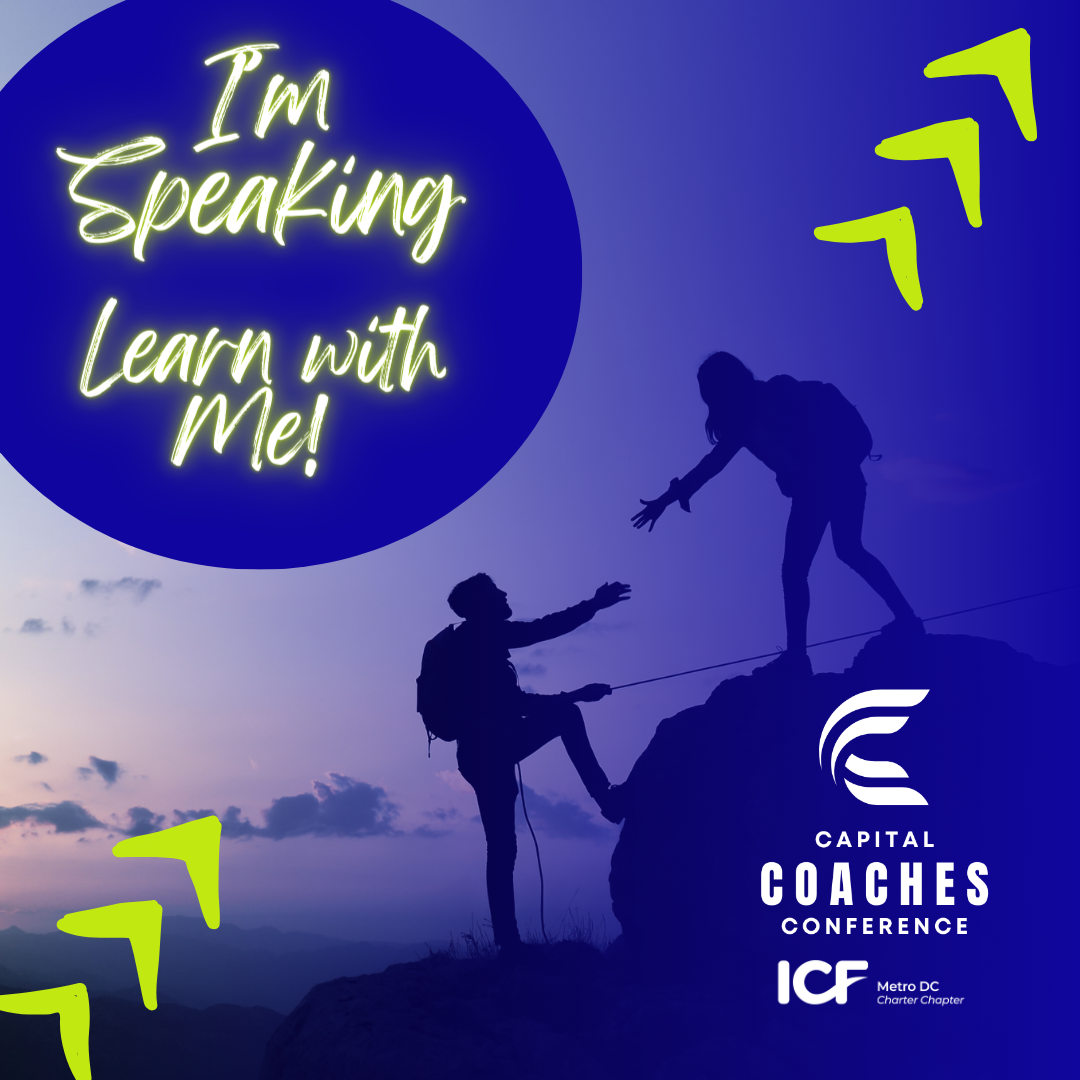(This article was written in collaboration with my good friends and colleagues, Bert Parlee, PhD and Ann Deaton, PhD)
The significant events that impacted your perspective become the stories from which you learn and teach as an authentic leader. (Tichy, 2002)
Our organizations, our teams, and our lives are made up of experiences, perspectives, relationships, and the stories we tell about them. Our stories are how we make sense of our experiences, the lens through which we see past events and our current reality. Yet stories also influence our openness to new experience and how we approach the future. We can tell stories of suffering in which we are the victims of forces beyond our control; we can also tell empowering stories in which we are the authors of our destiny. Choosing these stories consciously and wisely creates the path forward we desire.
Barry Johnson introduced “polarities” in his 1992 book Polarity Management: Identifying and Managing Unsolvable Problems (Johnson 1992), and together with Polarity Partnerships has developed tools, processes, and a technology platform that leaders, teams, and organizations use to leverage polarities (See Figures 1 and 2).
The term polarity refers to a specific category of paradox that involves a predictable dynamic at play in an unsolvable interdependent pair. When groups experience a paradoxical situation but lack a cogent way to make sense of it, not only do results suffer, but also the group’s morale, communication, and relationships are also negatively impacted (Emerson, 2013). Polarity Maps™ enable groups to navigate paradox/polarity instead of suffering through it blindly. According to Emerson (2013), Polarity Maps™ embody the key elements of an effective sense-making tool and can serve as a bridge between theory and practice. As such, Polarity Maps™ enable groups to harness the tension inherent in paradox and “navigate” it in a way that positively impacts their results while simultaneously increasing morale, enhancing communication, and strengthening their relationships. Polarity Maps™ are a practical way for groups to “make object” (Kegan, 1994) the paradoxes/polarities they experience and thereby alleviate the detrimental impacts often associated with the phenomenon (Pepper & Larson, 2006). The Polarity Map™/PACT™ is a “wisdom organizer” that leaders, teams, and organizations can use to navigate unsolvable but leverage-able polarity tensions.
FIGURE 1
The 5-Step PACT (Polarity Approach to Continuity and Transformation) process includes Engage Key Stakeholders as part of each step in the process.
FIGURE 2
In this article, we share two frameworks that support “Engage Key Stakeholders” to reclaim power in the 5-Step PACT™ (“Polarity Approach for Continuity and Transformation”).
- Barry Oshry’s work on different stakeholder perspectives provides insight into the different stories told at different levels of an organization, and polarity thinking offers an understanding of the competing values that may be at play for each stakeholder. Using this approach in the context PACT™ can enable a different, and more powerful stories.
- “TED” The Empowerment Dynamic: Bad things happen. We all get victimized at times—by difficult bosses, a challenging economy, health issues, an organizational culture that is a poor fit. The Empowerment Dynamic*, or TED*, highlights the opportunity to choose your response to life’s challenges, focusing on your vision for what you DO want instead of your fears or desire to move away from what you fear. Making the shift from seeing ourselves as victim to recognizing that we create our own vision, is a shift in story.
Empowering Stakeholders—a side note:
Along with the PACT™ – and here the more explicitly discussed Oshrey stakeholder model – it is timely to note the recent emergence of “Conscious Capitalism” (CC) as both an organization and growing global movement. The core tenets of CC are Greater Purpose, Conscious Leadership, Conscious Culture, and the “Multiple Stakeholder Model”. This last tenet outlines an empowering systemic framework based on compound, mutual exchanges of value. As well as applying this “win-win” principle to customers, employees and investors, it also figures prominently in relations with suppliers and the community stakeholders (amongst others that apply to mutually supporting one another’s purpose and success). Polarities such as Purpose AND Profit, Part AND Whole, and Mission AND Margin, typify complementarities at play within Conscious Capitalism dynamics. Moreover, complex design innovations are able to fashion multifaceted interdependencies in novel and often paradoxical “win-win-win-win-win” scenarios that transcend, for instance, the confines of traditional philanthropy. Beyond socially responsible investment strategies, CC looks to leverage and empower interdependent value systems in ways that add and exchange value; even through the downturns when belts would otherwise tighten and giving agendas contract.
PART I — Barry Oshry: From Suffering Stories to Authoring/Transforming
Have you ever felt powerless, alone, or out of control in your leadership, team, or organizational work? According to Barry Oshry, you’re not alone — everyone feels this way sometimes, regardless of his or her level in the organization. Part I of this article is based on Oshry’s work on power and systems,
There must be some truth to the “Suffering Story” that says, “I’m alone, powerless, and out-of-control“ if it’s so frequently told. This article looks at ways to shift the stories to “Authoring” and “Transforming” empowerment stories.
Four Suffering Stories:
The Tops — or “In-Charge”
I’m so Powerless, Alone, and Out-of-Control. Poor me! I’m dealing with so much volatility, uncertainty, complexity, and ambiguity (VUCA), and am expected to know the answers. I’m not sure there are any. Others think I have so much power, but in reality I depend on them to deliver consistent results and adapt to necessary change. I have to be strong, but my situation seems impossible in the face of competing commitments and values (aka polarity tensions), such as:
Preserving the Best in Continuity AND Stimulating Needed Transformation
Decentralizing for Speed/Autonomy AND Centralizing for Efficiencies/Synergies
Focus on the Internal Organization Needs AND Focus on the Outside of the Organization
Taking Care of the Bottom Line Margin Needs AND Achieving Mission Impact
Showing Confidence AND Remaining Humble
Providing Direction AND Inviting Participation
Being in the Future Now AND Planning for the Future
The Bottoms — or “Baseliners”
I’m so Powerless, Alone, and Out-of-Control. Poor me! I’m dealing with so much VUCA, and no one will tell me what to expect, or listen to me.… I know what Customers need and what I need to do to maintain consistency and to adapt to evolving realities but I have no power or authority to do anything about it. I’m confused. In-Charge and Midlanders tell me I have tremendous power because of my proximity to the Customer, but am I asked about Customer needs or included in the decision-making process related to those needs? Seldom, if ever… I have to be strong, but my situation seems impossible in the face of polarity tensions, such as:
Preserving the Best in Continuity AND Stimulate Needed Transformation
Focusing on the Customer AND Focusing on the Organization
Focusing on My Needs AND Focusing on My Team’s Needs
Advocating for My Needs AND Inquiring About Needs of Others
Speaking with Candor AND Speaking with Diplomacy
Being in the Future Now AND Planning for the Future
The Middles — or “Midlanders”
I’m so Powerless, Alone, and Out-of-Control. Poor me! I deal with so much VUCA, and being stuck in the middle means I never have clarity about what I should be doing, or focusing on. I’m caught between those In-Charge and Baseliners in a no-win “rock and hard place.” If I align myself too much with In-Chargers, the Baseliners view me as one of them. If I align myself too much with Baseliners I’m viewed by those In-Charge as one of them. I’m told I have tremendous potential and power, but my situation seems impossible in the face of polarity tensions, such as:
Preserving the Best in Continuity AND Stimulating Needed Transformation
People Achieving Their Full Potential AND The Organization Achieving Its Full Potential
Focusing on Task/Production AND Focusing on Relationships/People
Providing Freedom AND Holding Accountable
Acknowledging Reality AND Maintaining Hope
Focusing on Employee Needs AND Focusing on Organizational Needs
Being in the Future Now AND Planning for the Future
The “Customers”
Customers also report feeling powerless, alone, and out of control as they deal with the VUCA environment. Customers can feel that there’s little they can do to influence the organization to change in ways that better meet their needs. Without Customers the organization doesn’t exist, so there is universal agreement that Customers have tremendous power, which they demonstrate through feedback and voting with their dollars. Yet customers too feel the pull of polarizing forces:
Advocating for what I want AND Inquiring into what the organization can provide
Giving (my trust, feedback, money) AND Receiving (value)
Influencing AND Being Influenced by
Quality AND Cost
Meeting my unique needs AND Meeting the needs of the majority of customers
Flipping the Power “ON” with Authoring and Transforming Stories
When we reflect on our roles and the Suffering Stories, several key dimensions of our story begin to emerge:
- We can all occupy different roles at different times;
- Everyone has unique challenges and we need each other to address them;
- The power of engagement comes full circle;
- Each of us can be pivotal to making things right; and,
- There is power for each of us and all of us that is waiting to be claimed.
Authoring and Transforming — In-Charge
The base of this power may be in the authority of the position, knowledge/expertise, or responsibility for rewarding good performance or in holding people accountable for poor performance. While this role is often associated with being on the “big stage,” we are often In-Charge when making big decisions everyday “behind the scenes.” Whenever we’re empowered by others or when we empower ourselves to take initiative to do the right thing in those moments that require us to step up or step into a leadership role or void– we’re In-Charge. Our Authoring and Transforming Story in this role happens by Designing. That is, supporting and strengthening the capacity to create outcomes that contributes to whatever the shared purpose of the team/organization system. We’re designing when we help our team or the organization articulate a “GPS” or Greater Purpose Statement. The GPS engages by providing an inclusive goal and the benefit from seeing each other more completely while increasing the likelihood of achieving the shared goal. We’re designing when we step back to get perspective on the vision of the future, how we’re going to get there, and asking questions or suggesting options for getting there. We’re designing when we’re acknowledging realities and providing encouragement to share responsibility for achieving desired outcomes. Designing power endlessly seeks ways to develop, learn, and continuously grow in service of a GPS, mission, or vision.
Authoring and Transforming — Baseliners
(Structural continuity – bottoms are second mentioned in the suffering stories and third in authoring and transformation)
When we’re Baseliners, our unique system power potential is in Mending the system. As Baseliners, Authoring and Transforming power happens when we look for and fix whatever is fixable whenever, wherever, and however we can. Mending does what needs doing, which are often addressing important things that have begun or developed a pattern of being ignored or overlooked. Mending is an ongoing preventative maintenance and incremental adaptation that supports continuous improvement. Mending power interrupts to say, “Is anyone else seeing this?” or “Hey, enough is enough!” or “Someone has to do this, it might as well be me” or “This isn’t right, and we can do something about it!” Mending power endlessly seeks ways to develop, learn, and continuously grow in service of a GPS, mission, or vision.
Authoring and Transforming — Midlanders
Often we find ourselves in the position of being Midlanders, where our unique power potential is in Integrating within the system. Authoring and Transforming Stories of integration happen when we support the communication “web” to connect parts and coordinate interactions and the exchange of essential information. We integrate as Midlanders when we facilitate flow between and among system parts, simultaneously taking the view from the balcony and the dance floor. We’re tapping into integrating power when we’re open to seeing our role in any one minute, hour, or day as: leader, follower, manager, supervisor, advisor, or coach. Integrating power endlessly seeks ways to develop, learn, and continuously grow in service of a GPS, mission, or vision.
Authoring and Transforming — Customers
Internally, we’re all Customers in the Designing, Integrating, Mending value creation web. Also, at any time we choose we can take the view of the external Customers who are on the receiving end of our efforts. Whether we’re taking the role of an internal or external Customer, we have power in Confirming. We’re confirming as an internal Customer when we choose the appropriate time and method of providing positive or constructive feedback about our experience. We’re confirming as an external Customer when we put ourselves in the shoes of those who receive our products or services and ask the right questions, such as:
How well are we Designing for the outcomes we’re seeking in the value creation web?
How well are we Integrating individual and collective goals in the value creation web?
How well are we Mending what we can where and when we can in the value creation web?
How well are we Confirming whether or not Customers are receiving the value we are creating?
How well are we brokering our power individually and collectively, where and when we have it?
The Authoring and Transforming Story power equation is:
KEY STAKEHOLDER POWER= Designing + Integrating + Mending + Confirming
- When we’re In-Charge, we bring Designing power to the power equation of Integrating, Mending, and Confirming.
- As Midlanders we bring Integrating power to the Designing, Mending, and Confirming power equation.
- As Baseliners we bring Mending power to the Designing, Integrating, Mending, and Confirming power equation.
- As Customers (as internal Customers or when taking the perspective of the external Customer), we bring Confirming power to the Designing, Integrating, and Mending power equation.
Power Action Steps for Designing When You’re In-Charge:
- We involve system members in dealing with both the dangers and opportunities the system is facing — the more chronic or critical the issue, the more important it is to engage their wisdom.
- We ask system members for help, draw them into issues, problems, and dilemmas we are experiencing. We solicit ideas and input on ways to address opportunities and threats;
- We provide space for experiments and “games” to play; we provide challenges as opportunities to learn and contribute to the system’s capacity;
- We create “arenas” to grow and develop our capacities.…
- We communicate with system members by sharing the big picture and highlighting successes in addressing past opportunities and challenges;
- We coach others to address development needs, accentuate strengths, and set systems to cope with challenges and become resilient.
Power Action Steps for Mending When You’re a Baseliner:
- We use our closeness to the situation to envision new ways to attain desired outcomes:
- We make positive and productive suggestions for solutions or alternatives to address areas of needed improvement;
- We see ourselves as central players in adaptation and growth;
- We share the healthy pride we feel in successes, big and small, in the face of challenges; and,
- We acknowledge and look for examples of how great Mending contributed to attaining results.
Power Action Steps for Integrating When You’re a Midlander:
- We share information (intelligence) about different parts of the system;
- We use information from ongoing assessments to help others see the system issues in a positive light and shift perspectives from “dangers” to emerging opportunities;
- We share successes and new best-practices as we discover them;
- We continuously coach to build capacity and capability to leverage polarities;
- We coordinate between and among functions to reduce duplication of effort;
- We listen at the system level and be a resource shape-shifter that focuses attention where it’s most needed; and,
- We coach others to improve the speed and accuracy of information sharing that supports attaining desired results.
Power Action Steps for Confirming When You’re an internal Customer or take the perspective of the external Customer:
- We seek first to understand before being understood. We maintain willingness to work in partnership to generate the highest quality products. and services that meet or exceed Customer expectations.
- We commit to working to the best of our ability to hold ourselves and others accountable for maintaining the highest standards as possible in the value creation web.
- We constantly push ourselves and others to be and be do our best. We commit to being great providers of feedback about what is and isn’t working in a spirit of partnership when it makes sense.
- We explore ways to improve in the spirit of partnership.
- We influence the influencers to support removing obstacles and affecting needed changes that are needed in service of the mission/vision.
- We see our role as a partner in developing and maintaining respectful partnering relationships with internal and external Customers.
PART II — TED*: From Disempowering Drama Stories to Self-Empowerment
The Power “OFF” Switch — Learned Helplessness in Drama Triangles
A focus on problems and complaints creates drama. The Victim-Rescuer-Persecutor Drama Triangle (Karpman, 1968; Emerald, 2016) is a powerful approach to make sense of the limiting and destructive patterns that negatively impact individual and team dynamics. Each position or role in the triangle has a unique story with readily identifiable characters and characteristics.
As with “Suffering Stories”, actors in the drama triangle undermine individual and team performance in the process. Like “Suffering Stories” actors in the drama entanglement see things from their own perspective. One person may see themselves as a Victim while the identified Persecutor in turn feels victimized by this accusation. With awareness of these familiar roles and stories, it’s possible for individuals and teams to empower themselves to break the vicious and destructive cycle of negativity. At that point, the negative energy experienced in the vicious cycles can be re-purposed to more powerfully create virtuous and positively reinforcing cycles.
The identities of disempowering stories in a drama triangle are as follows:
The Victim
VICTIM – “Poor Me”
- Feels victimized, oppressed, helpless, hopeless, powerless, and ashamed.
- Looks for a Rescuer that will alleviate their negative feelings.
- If s/he stays in Victim position, will block self from making decisions, solving problems, experiencing pleasure and self-understanding. Over time the victim will feel even less powerful and more dependent on others, and more resentful as a result.
- “Dejected” disposition.
“Always” and “never” are often parts of disempowering Victim language and experience. Lots of time can be wasted talking about their problems, unfairness, bad luck, oppressive circumstances, and how they have been hurt. Suffering is the Victim’s identity — things are never right and there is never enough (time, support, resources, etc.). There is always a need for something more or for someone to come (or to go) before the situation can change. When something good happens, the Victim says, “It never lasts…something always ruins it …” Victim stories can wear down resilience and drain energy.
The Rescuer
RESCUER – “I’ll Help You”
-
- Rescues when he/she wants/needs to, or not. Rescues on his/her terms.
- Feels guilty if doesn’t rescue. Feels guilt around not rescuing.
- Keeps the Victim dependent.
- Feels at his/her best when needed.
- Expects that rescue attempts will yield only temporary relief.
- Fears no longer being needed.
Having all the answers and knowing the right solutions may not sound like a bad thing. However, Rescuers tend to see themselves as heroes. In contrast, they may be seen by others more like party crashers taking responsibility for what’s not theirs. Rescuers need to be needed, admired, and depended upon. They require a Victim to save from the Persecutor/s. Their greatest fear is that they will no longer be needed.
The Persecutor
PERSECUTOR – “It’s All Your Fault”
-
-
- Sets punitive limits and constraints.
- Blames, criticizes, keeps Victim oppressed.
- Is mobilized by anger.
- Rigid, authoritarian stance.
- Critical “Parent” posture.
- Fears and defends against becoming a Victim.
-
The Persecutor punishes others for what they perceive as bad or wrong behavior. This can then manifest as bad or destructive behavior of their own. However the Persecutor tends to see themselves as having high standards rather than being destructive. Persecutors can feel like Victims when others challenge their behavior, and Victims and Rescuers can easily slip into the Persecutor role when they express their anger, criticism, and resentment. More than anything, the Persecutor fears becoming a victim. Trying to maintain a position of power over the Victim ensures safety, at least in the Persecutor’s own mind.
Breaking The Cycle – Taking Responsibility to Create Norms and Perform
The roles of the drama triangle often become habits, or well-worn ruts in the stories we tell. The longer and more severely these unhealthy cycles play out, the greater the stress, blame, and amount of wasted time and energy. Drama Triangles are living proof for Richard Bach’s insight, “Argue for your limitations and sure enough they’re yours.” Naming the fact that a drama triangle is in process can be a good first step toward an empowerment shift, and the creation of a more effective story.
Identifying the patterns in a drama triangle enables awareness and choice. We all have choices about whether or not to engage in destructive drama dynamics. Asking about the intention (“what do you want?”) and choice (“what actions can you take that align with that intention?”) are potent ways to reclaim power, and shift to a more productive and empowering position. Though you can’t choose for others, shifting your own story can also contribute to making a similar shift available for others. However, the habit of focusing on what’s wrong and who to blame for our discomfort can be a difficult one to break.
The Power “ON” Switch — Learned Optimism in The Empowerment Dynamic
Early Questions ask:
-
-
- What is my motivation for my actions? What are my actions motivated by?
- Am I acting out of clear intentions and choices?
- What or who am I attempting to change or control?
- What are my expectations? What do I want?
-
One key to getting out of the drama triangle is to shift from external referencing–the unhealthy and even dangerous pattern of looking outside of ourselves for approval, answers, solutions, love, identity and happiness. On the other hand, enthusiastically inviting feedback is a valuable reality-testing tool to ensure we’re not telling ourselves and other people stories that don’t merit shared perspective. Empowerment involves independent initiative AND welcoming information from others about our efforts. (Drama roles are all about self-stories that justify the drama while remaining immune from disconfirming data). By starting with an internal reference and developing adequate internal authority and self-efficacy requires a person (or team) to be willing to look internally and to stay fully engaged and present. Speaking truth without blame or judgment is a first step as a Challenger (no longer a Persecutor) who is seeking to create a different and more empowering dynamic.
This involves an ongoing reframing of perspectives, which is a process requiring both courage and vulnerability. There must be a willingness to own imperfection, acknowledge and forgive mistakes, to hold onto one’s vision, and to make requests and commitments toward goals. Ongoingly. Adopting creative measures to hold individuals and the team accountable for improvement demonstrates genuine resolve to anchor new intentional behaviors and change that benefits all involved.
The TED* Empowerment Roles
– David Emerald
From Victim to Creator — is the central role in TED* (*The Empowerment Dynamic), which taps into an inner state of passion. The role of Creator is the empowered alternative to the drama triangle role of Victim. Directed by intention, a Creator is focused on a desired outcome, propelling the person who has previously identified as Victim to take Baby Steps toward what they want to create. A Creator also takes ownership of their ability to choose responses to life circumstances.
From Persecutor to Challenger — is focused on learning and growth, holding a Creator accountable while encouraging learning, action, and next steps. The role of Challenger is the empowered alternative to the drama triangle role of Persecutor. A Challenger intentionally builds others up, as a positive alternative to putting someone down by criticizing, blaming, or controlling. They challenge others by encouraging them to stretch, believing in their potential, inviting more and better. Challengers provoke and evoke learning and growth.
From Rescuer to Coach — uses compassion and questions to help a Creator develop a vision and action plan. The role of coach is the empowered alternative to the drama triangle role of Rescuer. A Coach provides encouragement and support, in place of “rescuing” actions. Rather than doing it for the other, the Coach encourages-“I believe in you” and inquires- “How will you do it?”
Individual Questions to Replace Old Stories
-
-
- What is it that I really want, need or desire for myself and from others?
- If I had it, how would I know?
- If that were what I wanted, what would I do?
- What can I learn from the times when I/we engage in drama?
- What new choices will I make to change this? How will I cue myself to take this new path?
-
Team Questions to Replace Old Stories
-
-
- What is it that we really want, need or desire for our self and from others?
- If that were what we wanted, what would we do to move in that direction?
- What learning do we want to capture from the situations when we experience drama?
- What new choices do we now see are available to us? How will we remind ourselves of those options?
-
Individuals and the team must believe the choice is there, and that new thoughts and actions will contribute to creating a new reality. The move from feeling powerless and blaming to focusing on what’s wanted and possible are powerful and positive first steps. While this shift in perception can move a leader and team from drama to empowerment, it requires courage to be vulnerable and to interrupt the habits of thinking and acting that animates the drama story.
Credits
TOTAL SYSTEM POWER Barry Oshrey: Developers, Fixers, Integrators, and Validators
http://govleaders.org/total-system-power.htm
TED* The Empowerment Dynamic
Transcending the Victim-Rescuer-Persecutor Drama Triangle, (2009) Michael Bradford, “The Holman House Healing Centre Journal & a Greek Magazine” – London, England
The Drama Triangle by Steve Karpman with Comments by Patty E. Fleener M.S.W. www.KarpmanDramaTriangle.com
David Emerald continued Karpman’s work with, “The Empowerment Dynamic” www.PowerofTed.com
Polarity Partnerships — PACT
www.PolarityPartnerships.com
www.PolarityResources.com
Emerson, M. B. (2013), Navigating Organizational Paradox with Polarity Mapping: A Classic Grounded Theory Study. Doctoral dissertation, Fielding Graduate University, Santa Barbara.
Johnson, B. 1992. Polarity Management: Identifying and Managing Unsolvable Problems. Amherst, MA: HRD Press.
Kegan, Robert. (1994). In over our heads: The mental demands of modern life. Cambridge, Mass.: Harvard University Press.
Pepper, G. L., & Larson, G. S. (2006). Cultural identity tensions in a post-acquisition organization. Journal of Applied Communication Research, 34(1), 49-71.









